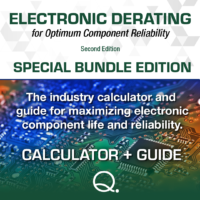| Chapter 1 An Overview Of Weibull Analysis |
1-1 |
| 1.1 Objective |
1-1 |
| 1.2 Background |
1-1 |
| 1.3 Examples |
1-2 |
| 1.4 Scope |
1-2 |
| 1.5 Advantages of Weibull Analysis |
1-3 |
| 1.6 Data, Discrete Versus Life Data |
1-3 |
| 1.7 Failure Distribution |
1-4 |
| 1.8 Failure Forecasts And Predictions |
1-5 |
| 1.9 Engineering Change Test Substantiation |
1-6 |
| 1.10 Maintenance Planning |
1-6 |
| 1.11 System Analysis And Math Models |
1-7 |
| 1.12 Weibulls With Curved Data |
1-7 |
| 1.13 Weibulls With Corners And Doglegs |
1-9 |
| 1.14 Weibayes |
1-9 |
| 1.15 Small Sample Weibulls |
1-9 |
| 1.16 Updating Weibulls |
1-9 |
| 1.17 Deficient (Dirty) Data |
1-9 |
| 1.18 Establishing The Weibull Line, Choosing The Fit Method |
1-10 |
| 1.19 Related Methods And Problems |
1-10 |
| 1.20 Summary |
1-11 |
| Chapter 2 Plotting The Data And Interpreting The Plot |
2-1 |
| 2.1 Foreword |
2-1 |
| 2.2 Weibull Data |
2-1 |
| 2.3 The Weibull Plot Scales |
2-2 |
| 2.4 (Eta) and (Beta) |
2-2 |
| 2.5 Weibull Analysis – An Example |
2-4 |
| 2.6 Median Ranks |
2-5 |
| 2.7 The Weibull Plot |
2-6 |
| 2.8 “B” Life |
2-6 |
| 2.9 Suspended Test Items |
2-7 |
| 2.10 Bernard’s Approximation |
2-7 |
| 2.11 Suspensions Increase Eta |
2-8 |
| 2.12 Interpreting The Weibull Plot |
2-8 |
| 2.13 Beta < 1 Implies Infant Mortality |
2-9 |
| 2.14 Beta = 1-0 Implies Random Failures |
2-10 |
| 2.15 1-0 < Beta < 4-0 Implies Early Wear Out |
2-11 |
| 2.16 Beta > 4-0 Implies Old Age (Rapid) Wear Out |
2-11 |
| 2.17 Weibull Modes May Be “Covered” |
2-12 |
| 2.18 Weibull Paper And Its Construction |
2-12 |
| 2.19 Weibull Analysis – The Standard Method |
2-14 |
| 2.20 Problems |
2-13 |
| Chapter 3 Dirty Data, “Bad” Weibulls, And Uncertainties |
3-1 |
| 3.1 Foreword |
3-1 |
| 3.2 Small Sample Uncertainties |
3-1 |
| 3.2.1 Goodness Of Fit |
3-3 |
| 3.3 Suspensions |
3-6 |
| 3.4 Suspect Outliers |
3-6 |
| 3.5 Curved Weibulls And The t0 Correction |
3-7 |
| 3.6 Curved Weibulls And The Log Normal Distribution |
3-11 |
| 3.7 Data Inconsistencies And Multimode Failures |
3-14 |
| 3.7.1 Low-Time Failures |
3-14 |
| 3.7.2 Close Serial Numbers |
3-15 |
| 3.7.3 Mixtures Of Failure Modes |
3-16 |
| 3.8 Steep Slopes Hide Problems |
3-17 |
| 3.9 Bad Weibull Patterns |
3-18 |
| Conclusion |
3-18 |
| 3.10 Problems |
3-19 |
| Chapter 4 Failure Forecasting = Risk Analysis |
4-1 |
| 4.1 Situation |
4-1 |
| 4.2 Definition |
4-1 |
| 4.3 Forecasting Techniques |
4-1 |
| 4.4 Calculating Failure Forecasts |
4-1 |
| 4.4.1 Expected Failures Now |
4-1 |
| 4.1.2 Failure Forecast When Failed Units Are Not Replaced |
4-3 |
| 4.4.3 Failure Forecasts When Failed Units Are Replaced |
4-3 |
| 4.5 Failure Forecast Analysis-Summary |
4-4 |
| 4.5.1 Case Study 1: Bearing Cage Fracture |
4-5 |
| 4.5.2 Case Study 2: Bleed System Failures |
4-7 |
| 4.6 System Failure Forecast Without Simulation* |
4-12 |
| 4.6.1 Case Study 3: Aircraft In-Flight Engine Shutdowns* |
4-12 |
| 4.7 System Failure Forecasts With Simulation* |
4-15 |
| 4.7.1 Case Study 4: System Failure Forecast With Simulation* |
4-17 |
| 4.8 Optimal (Lowest Cost) And Block Replacement Intervals* |
4-19 |
| 4.9 Problems |
4-25 |
| Chapter 5 Maximum Likelihood Estimates & Other Alternatives |
5-1 |
| 5.1 Introduction |
5-1 |
| 5.2 Maximum Likelihood Estimation (MLE) |
5-1 |
| 5.3 MLE With Reduced Bias Adjustment (RBA) for Accurate Results |
5-3 |
| 5.3.1 The RBA Factor for Normal and Lognormal Distributions |
5-4 |
| 5.3.2 The RBA factor for the Weibull distribution |
5-5 |
| 5.3.3 Best Practice |
5-6 |
| 5.4 Median Rank Regression: X on Y Versus Y on X |
5-7 |
| 5.5 Plotting Positions |
5-9 |
| 5.5 Special Methods: MLE With Reduced Bias Adjustment (RBA) |
5-6 |
| 5.6 Special Methods: Gossett’s Student’s T |
5-10 |
| 5.7 The Dauser Shift – Unknown Suspension Times |
5-10 |
| 5.8 Special Methods For Inspection Interval Data And Coarse Data |
5-12 |
| 5.8.1 Inspection Option #1 |
5-12 |
| 5.8.2 & |
|
| 5.8.3 Probit Analysis Inspection Options #2 & 3 |
5-13 |
| 5.8.4 Kaplan-Meier (KM) Inspection Option #4 |
5-14 |
| 5.8.5 Interval Maximum Likelihood Estimation (MLE) Inspection Option #5 |
5-14 |
| 5.9 Distribution Analysis |
5-16 |
| Chapter 6 Weibayes And Weibayes Substantiation Testing |
6-1 |
| 6.1 Foreword |
6-1 |
| 6.2 Weibayes Method |
6-2 |
| 6.3 Weibayes Without Failures |
6-2 |
| 6.4 Weibayes With Failures |
6-3 |
| 6.5 Unknown Failure Times |
6-4 |
| 6.6 Weibayes Worries And Concerns |
6-4 |
| 6.7 Weibayes Case Studies |
6-5 |
| 6.8 Substantiation And Reliability Testing |
6-9 |
| 6.9 Zero-Failure Test Plans For Substantiation Testing |
6-10 |
| 6.10 Zero-Failure Test Plans For Reliability Testing |
6-12 |
| 6.10.1 Re-Expression Of Reliability Goal To Determine ? |
6-12 |
| 6.10.2 Tailoring and Designing Test Plans |
6-14 |
| 6.11 Total Test Time |
6-15 |
| 6.12 Test-To-Failure Versus Weibayes Zero-Failure Tests |
6-16 |
| 6.13 One Or Zero Failure Test Plans |
6-19 |
| 6.14 Sudden Death Tests With Weibull And Weibayes |
6-20 |
| 6.15 Case Study: Cost Vs Uncertainty Trades |
6-23 |
| 6.16 Normal And Lognormal Tests |
6-22 |
| 6.17 Accelerated Testing |
6-24 |
| 6.17.1 Accelerated Step-Stress Test Data Analysis* |
6-25 |
6.17.2 Accelerated Testing: A Method For Estimating Test Acceleration Factor With No Existing
In-Service Failures* |
6-26 |
| 6.18 System Deterioration |
6-28 |
| 6.19 Weibull Libraries And Lessons Learned |
6-29 |
| 6.19.1 A Weibull Library Case Study |
6-30 |
| 6.19.2 Weibull Libraries For End Users |
6-31 |
| 6.21 Problems |
6-32 |
| Chapter 7 Interval Estimates |
7-1 |
| 7.1 Interval Estimates |
7-1 |
| 7.2 Confidence Interval Concept |
7-1 |
| 7.3 Confidence Intervals For B Lives And Reliability |
7-2 |
| 7.3.1 Beta-Binomial Bounds |
7-3 |
| 7.3.2 Fisher’s Matrix Bounds |
7-4 |
| 7.3.3 Likelihood Ratio Bounds |
7-5 |
| 7.3.4 Pivotal Bounds Monte Carlo Bounds |
7-6 |
| 7.3.5 Reliability Assurance Interval and the “p” value |
7-7 |
| 7.3.6 Normal Distribution Confidence Bounds with Student’s t |
7-7 |
| 7.3.7 Summary Of Confidence Bounds For B Life And Reliability |
7-8 |
| 7.4 Confidence Intervals For Eta And Beta |
7-8 |
| 7.5 Are Two Weibull Data Sets Different Or From The Same Distribution |
7-9 |
| 7.5.1 Double Confidence Bounds Do Not Overlap |
7-10 |
| 7.5.2 Likelihood Ratio Test |
7-11 |
| 7.5.3 Likelihood Contour Plots |
7-11 |
| 7.6 Problems – True Or False? |
7-13 |
| Chapter 8 Related Math Models |
8-1 |
| 8.1 Introduction |
8-1 |
| 8.2 Binomial Distribution |
8-1 |
| 8.3 Poisson Distribution |
8-5 |
| 8.4 Binomial Becomes Poisson…Sometimes |
8-9 |
| 8.5 The Exponential Distribution |
8-11 |
| 8.6 Kaplan-Meier Survival Estimates |
8-12 |
| 8.7 Probabilistic Design |
8-17 |
| 8.7.1 Strength-Load And Life-Usage Interactions |
8-17 |
| 8.7.2 Total Life = Crack Life + Crack-To-Rupture Life |
8-18 |
| 8.7.3 Does Failure Mode A Cover Mode B? |
8-19 |
| 8.8 Production Process Reliability |
8-19 |
| 8.9 Extreme Value Statistics |
8-21 |
| 8.10 Batch Effects |
8-23 |
| 8.11 Problems |
8-24 |
| Chapter 9 Crow-AMSAA Modeling, Warranty Analysis & Life Cycle Costs |
9-1 |
| 9.0 The Crow-AMSAA-Duane Reliability Growth Model |
9-1 |
| 9.1 Background History |
9-2 |
| 9.2 CA Methods |
9-2 |
| 9.2.1 Simple Graphical and Regression Solution |
9-2 |
| 9.2.2 IEC Solutions for Time and Failure Terminated Data |
9-5 |
| 9.2.3 IEC MLE Solutions for Interval and Grouped Data |
9-7 |
| 9.3 Comparisons of the IEC and Regression CA Methods |
9-12 |
| 9.4 CA Input May Be Confusing |
9-14 |
| 9.5 Missing Early Data with CA |
9-14 |
| 9.6 First Time Failure Mode Analysis |
9-14 |
| 9.7 Warranty Claims Analysis |
9-15 |
| 9.8 Warranty Data Matrix |
9-16 |
| 9.9 Warranty Data Rules |
9-17 |
| 9.10 Warranty Data Matrix Conversion and Analysis |
9-18 |
| 9.11 Warranty Analysis Methods |
9-20 |
| 9.11.1 Inspection Option #1 |
9-20 |
| 9.11.2 Kaplan-Meier |
9-20 |
| 9.11.3 MLE Interval |
9-20 |
| 9.11.4 Crow AMSAA |
9-20 |
| 9.12 Case Studies |
9-21 |
| 9.13 Tracking Your Results |
9-21 |
| 9.14 Warranty Conclusions and Recommendations |
9-21 |
| 9.15 Life Cycle Cost |
9-21 |
| 9.16 Net Present Value (NPV) |
9-21 |
| 9.17 Discount Rate |
9-22 |
| 9.18 Life Cycle Cost and NPV |
9-22 |
| 9.19 LCC Calculations |
9-23 |
| 9.20 Case Studies |
9-24 |
| Chapter 10 Summary |
10-1 |
| 10.1 The Beginning Of The End |
10-1 |
| 10.2 Which Method? What Kind Of Data? |
10-1 |
| 10.3 Looking At The Plot, What Do You See? |
10-3 |
| 10.4 Which Distribution Is Best? |
10-4 |
| 10.5 Substantiation And Accelerated Testing |
10-6 |
| 10.6 Confidence Intervals |
10-6 |
| 10.7 Presentations And Reports |
10-6 |
| 10.8 Logic Diagram – Flowchart |
10-6 |
| 10.9 The End |
10-6 |
| 10.10 Best Practice Flow Chart |
10-7 |
| Chapter 11 Case Studies And New Applications |
11-1 |
| 11.1 Foreword |
11-1 |
| 11.2 Stress Corrosion Failure Forecasting |
11-2 |
| 11.3 Optimal Component Replacement – Voltage Regulators |
11-3 |
| 11.4 Locomotive Power Units Overhaul Life |
11-7 |
| 11.5 Cost Effective Calibration Intervals |
11-8 |
| 11.6 Florida Power & Light Turbogenerator Failure |
11-10 |
| 11.7 TVA Bull Run Fossil Plant – Controller Cards |
11-11 |
| 11.8 Repairable Systems Reliability Growth Assessment |
11-13 |
| 11.9 Front Jounce Bumpers |
11-14 |
| 11.10 Transfer Case Seal |
11-15 |
| 11.11 Dental Acrylic Adhesive Fatigue |
11-16 |
| 11.12 Duane-Crow-AMSAA Reliability Modeling |
11-17 |
| 11.13 Weibull Analysis Of Boiler Tube Failures |
11-20 |
| 11.14 Gas Turbine Seal Failures – A Batch Problem |
11-23 |
| 11.15 Challenger Space Shuttle Weibull |
11-25 |
| Appendix A: Glossary |
A-1 |
| Appendix B: Rank Regression And Correlation Method Of Weibull Analysis |
B-1 |
| B-1 Method |
B-1 |
| B-2 Example And Step-By-Step Procedure |
B-1 |
| Appendix C: Maximum Likelihood Estimation* |
C-1 |
| C-1 Foreword |
C-1 |
| C-2 Statistics, Probability And Likelihood |
C-1 |
| C-3 The Likelihood Function |
C-1 |
| C-4 Maximizing The Likelihood Function |
C-2 |
| C.5 Maximum Likelihood Example |
C-3 |
| C.6 Interval MLE |
C-6 |
| C.7 Maximum Likelihood Versus Median Rank Regression Estimates |
C-8 |
| Appendix D: Goodness of Fit |
D-1 |
| Appendix E: Weibayes Analysis |
E-1 |
| E.1 Foreword |
E-1 |
| E.2 Weibayes Equation With No Failures |
E-1 |
| E.3 Weibayes With Failures |
E-2 |
| Appendix F: Batch Failures Using The Aggregated Cumulated Hazard Function |
F-1 |
| F.1 Batch Failures On Weibull Plots |
F-1 |
| F.2 Batch Problems With The “Present-Risk” Method |
F-2 |
| F.3 The ACH Method |
F-3 |
| F.4 A Case Study: Aero-Engines – (Lp Turbine Strap Failures) |
F-4 |
| F.5 Concluding Remarks |
F-5 |
| Appendix G: Weibull And Log Normal Mean And Variance |
G-1 |
| G.1 Rth Moments |
G-1 |
| G.2 Weibull Mean |
G-2 |
| G.3 Weibull Variance |
G-3 |
| G.4 Weibull Mode |
G-3 |
| G.5 Weibull Median |
G-3 |
| G.6 Log Normal Mean And Standard Deviation |
G-3 |
| G.7 Log Normal Variance |
G-4 |
| Appendix H: Weibull Graph Paper For Manual Plots |
H-1 |
| Appendix I: Median Ranks |
I-1 |
| Appendix J – Mixtures Of Populations And Failure Modes |
J-1 |
| J.1 Competing Risk: |
J-1 |
| J.3 Competing Risk Mixture: |
J-2 |
| J.4 Compound Competing Risk Mixture: |
J-2 |
| J.5 Weibath Model: |
J-2 |
| J.7 Curve Shape. |
J-3 |
| Appendix K: Answers To Problems |
K-1 |
| Appendix L: The C4 Factor |
L-1 |
| Appendix M: Graphical Repair Analysis |
M-1 |
| Appendix N: Waloddi Weibull |
N-1 |
| References |
R-1 |
| Index |
I-1 |








